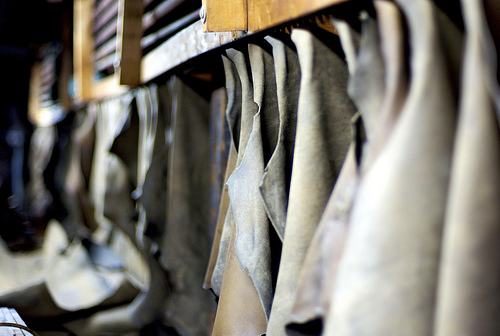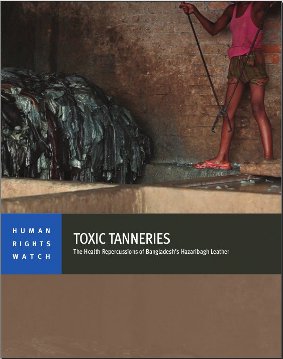 In Medieval times the location of a tannery was heavily based on the requirements of a nearby river or stream, cattle which could supply the hide, and of course oak trees which would supply the bark needed for the tanning process. The use of water to a medieval tanner was of great importance, considering its frequent use for the manufacture of leather. For example, the site of the Shifnal tannery in Birmingham, UK, was purposely placed adjacent from the Wesley Brook. The tanners use of the local streams have been documented, and it was highlighted that on many occasions complaints were made due to tanners fouling the towns water with the hides.
In Medieval times the location of a tannery was heavily based on the requirements of a nearby river or stream, cattle which could supply the hide, and of course oak trees which would supply the bark needed for the tanning process. The use of water to a medieval tanner was of great importance, considering its frequent use for the manufacture of leather. For example, the site of the Shifnal tannery in Birmingham, UK, was purposely placed adjacent from the Wesley Brook. The tanners use of the local streams have been documented, and it was highlighted that on many occasions complaints were made due to tanners fouling the towns water with the hides.
But since society at the time could not do without leather – it was an essential ingredient both for water resilient clothing as well as for travel gear of all types – by law, Medieval European cities used to keep tanneries and their offensive smells outside their walls, and down stream.

In the present, because of the demand for luxury at the cheapest possible prices, the industry is pushed out to where it is easier to ignore the moral and environmental reek. But the global campaigns organisations are sharpening their battle swords, and the probability that the leather luxury industry is facing a ‘Detoxgate’ is increasing by the day.
The first to launch themselves into the battle is the global campaign organisation Human Rights Watch (HRW), who published in October their report entitled ‘Toxic Tanneries‘, focused – by way of example – on the status of the leather industry in Bangladesh specifically. Similar stories can be found across the full length of the leather supply chain also in India, Pakistan, Northern Africa, Bazil, Argentina, Bolivia, Cambodia, the Philippines and even the United States, to just name a few.
Video: By Human Rights Watch
Their insights HRW published are thoroughly sobering. Just like Greenpeace did with their Detox Campaign to focus the world’s attention onto the situation of dye houses, we can expect hence for a similar push focused on tanneries world wide.
And to make matters worse: all of it is very old news. This should ring the risk management alarm bells for every single luxury brand we know of. The reputation costs, and the potential litigations that may happen once a wider public becomes aware of the issues are enormous.
For now they have chosen to ignore the risk they are facing – precisely as it was in the case of Greenpeace Detox campaign (which ultimately even managed to break Inditex’ back). Here, why the tanning industry is a real operational and reputation risk for luxury brands, by way of a few examples:
- Chromium, and specifically Chromium VI, is still habitually used in tanneries. Chromium IV is widely known to be linked with cancer when exposure happens in large doses, it causes heavy allergies even in relatively small doses, accumulates in the body and the environment, and is toxic to plant and aquatic life. Its use has been very heavily restricted within the EU.
- In Brazil the leather industry has been linked with the deforestation of the Amazon, and with slave labour at the full length of its value chain.
- HRW has proven child labour to be taking place in the Dhaka tanneries they investigated. This is reminiscent of the (repeat) Nike scandal/s in the 1990, and Adidas football scandal.
The cost of these scandals is enormous, and luxury brands are well advised in having a careful eye over their leather supply chains.
The easiest, and most suitable way how to reduce the risk within the leather supply chain is by using the resources made available by the Leather Working Group (LWG). The LWG has developed a thorough auditing frame work – the questionnaire is a freely available resource – and in addition publishes a list of all audited tanneries including a Gold/Silver/Bronze/audited rating.

